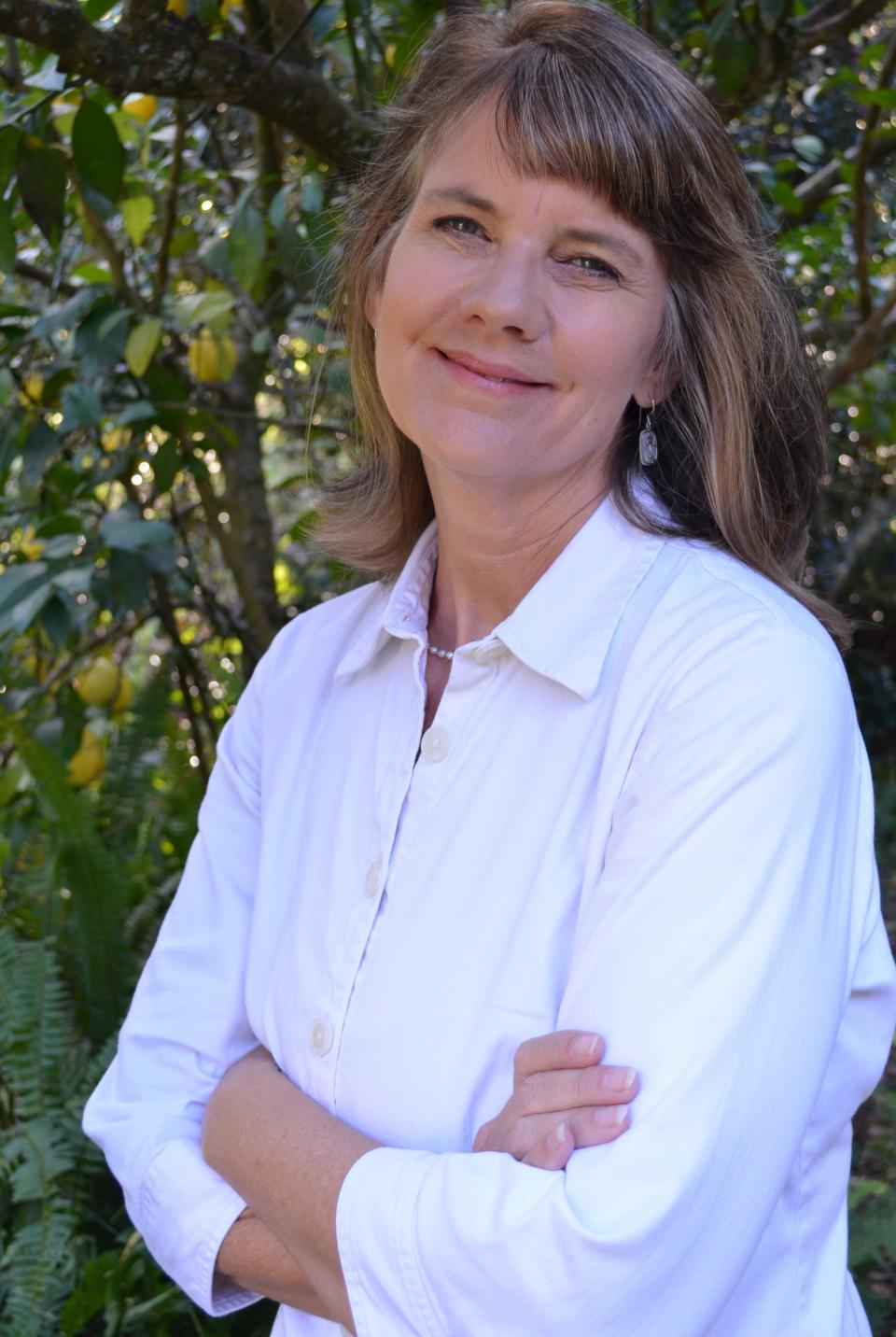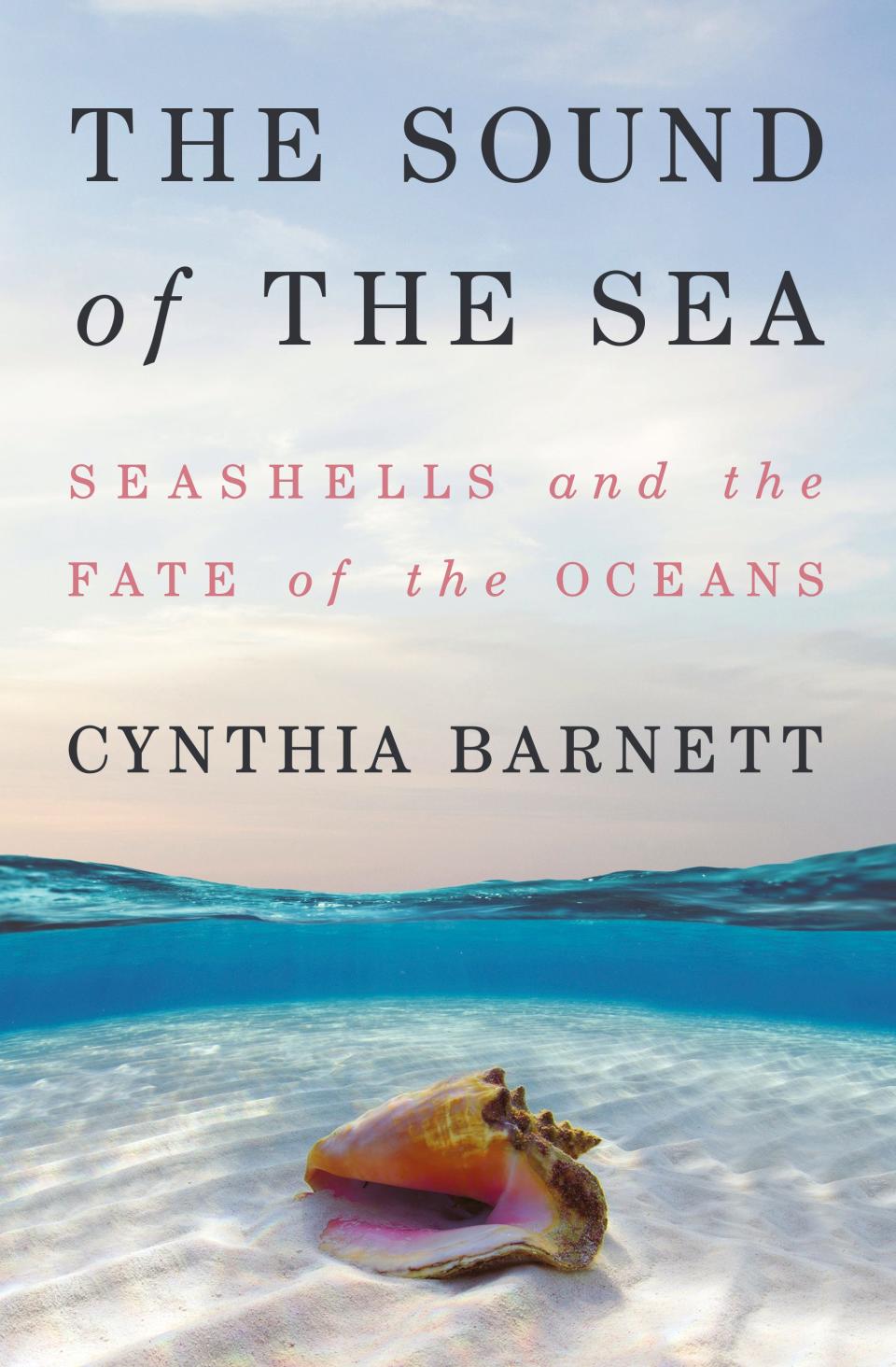She studies seashells: Fort Myers native Cynthia Barnett to speak at author lecture series
- Oops!Something went wrong.Please try again later.
Amateur conchologists (aka shell collectors) who have walked Sanibel Island’s beaches bent at the waist in the classic “Sanibel Stoop” may think of seashells as the pretty trinkets we collect on vacation.
But they really are so much more, says Florida-based writer Cynthia Barnett.
“We walk on a world of shells,” says Barnett, author of “The Sound of the Sea: Seashells and the Fate of the Oceans.”
“They are beaches, they are mountains, and they also are marble. If you think about the limestone Pentagon or the Lincoln Memorial or even the Empire State Building, these are really powerful buildings. And they owe their strength to incredibly fragile, soft beings.”
Barnett is the final speaker, on Monday, March 20, in the 2023 Nonfiction Author Series, sponsored by the nonprofit Friends of the Library of Collier County. She replaces the previously scheduled author, Amanda M. Fairbanks, who had to cancel for personal reasons.
The four-lecture series, which raises funds for the Collier County Public Library system, is sold out, but the Friends does maintain a waitlist. (See info box for details.)
From Fort Myers to Gainesville
Barnett, who was born in Fort Myers, currently is the Environmental Journalist in Residence at the University of Florida's College of Journalism and Communications in Gainesville. She has published three other award-winning environmentally themed books and has written articles for the New York Times, Wall Street Journal, National Geographic magazine and many other publications.
“The Sound of the Sea,” which landed on best-of-the-year lists for NPR’s “Science Friday” and Kirkus Reviews, was partly inspired by a survey done years ago at the Bailey-Matthews National Shell Museum in Sanibel.
Big news:Sanibel's Bailey-Matthews shell museum acquires world record-sized shell
Museum visitors were surveyed to find out how much they knew about seashells, and a shocking 90 percent of them didn’t know that shells were made by live animals.
“I was just absolutely floored when I heard the statistic,” Barnett said in a Vox.com interview. “Most people thought they were some sort of rock or stone, and I was really disturbed by that. It just got me thinking how separated we are from the natural world.”
As that natural world changes, with increasingly warm oceans and more chemical pollutants, the marine animals that live in seashells are among the first creatures affected, she says.

“Climate change is changing the chemistry of the oceans,” Barnett said on “Science Friday.” “The carbon dioxide we send into the atmosphere has turned seawater about 30 percent more acidic than it was at the start of the Industrial Era. So this chemical change has begun to limit the carbonate that mollusks use to build their shells. And acidic waters are also boring into some shells, pitting or eroding them.”
When 'shell madness' reached Sanibel's shores
Naples Daily News: Could you give us a short history of “shell madness,” for which Sanibel Island is a prime locale?
Cynthia Barnett: “Shell madness,” which also reached a fever pitch during the Dutch Golden Age, had taken hold in Sanibel by 1905, when the shell writer Julia Ellen Rogers described the island as “too popular … too faithfully are her beaches scanned.” But the American seashell craze really spread in mid-century. Shell collecting became America’s fastest-growing hobby in the 1950s. Servicemen stationed in Okinawa, Guam, Midway and other Pacific islands during World War II had returned home with rucksacks full of tropical shells, and collectors were launching shell clubs in every major city in America to share prize specimens and travel tips. Sanibel was the mecca.
Past speaker:Tiger, Phil, war and more: Nonfiction Author Series returns to Naples with 4 sessions in 2023
NDN: Shell mounds, shell cities, were great centers of advanced civilizations, such as for the Calusa in Southwest Florida. What lessons about living on the coast could we learn from their practices?
CB: The Calusa lived through several periods of rising and falling sea levels during their centuries on the coast. The Calusa scholar Bill Marquardt, curator emeritus of South Florida Archaeology and Ethnography at the Florida Museum of Natural History, also has shown that they endured a massive hurricane around A.D. 300. Archaeologists can track how the Calusa adapted over centuries. When sea levels were higher, they moved their homes inland. They came up with fish pens and other forms of aquaculture during times of decreased fisheries. They were resilient and adapted to changes, which has been the story of humanity — although we usually make some dunderheaded mistakes, too.
NDN: Marine mollusks and so many other marine animals are imperiled in Florida and around the world. But don’t you also say there are some “hope spots”?

CB: The seagrass meadows of North Florida’s Big Bend region are a good example of a “hope spot.” Bay scallops, for example, which vanished from Pine Island Sound long ago, still thrive in those meadows. The sea grasses are relatively healthy, the manatees are not dying as they are on the over-developed Florida coastlines. Land conservation along the coasts is one of the best things we can do to protect water quality and protect ourselves from storms and rising seas.
NDN: Born in Fort Myers, you have a special affinity for Southwest Florida. You wrote a moving and eye-opening essay on politico.com last October about Florida’s future after Hurricane Ian’s massive destruction. This isn’t specifically seashell-related, but could you encapsulate some of those observations?
CB: Florida has always been a place of reinvention, from the Calusa hurricane of A.D. 300 to the early 20th century Sanibel hurricanes that shifted the island economy from agriculture to tourism. We are always remaking the Florida dream. So as climate change and crowded coastlines amplify the risks of living here, the question becomes: What’s the next Florida dream? It could ultimately be verdant and safer inland communities, and a wilder coastline with working waterfronts. Being human, we are probably going to make some dunderheaded mistakes before we get there.
Nonfiction Author Series
What: Author lectures and breakfast that raise funds for the Collier County Public Library system
Where: Kensington Country Club, 2700 Pine Ridge Road, Naples
When: March 20. Breakfast (a hot and cold buffet) is served at 8:30 a.m.; Cynthia Barnett speaks at 9:15 a.m., followed by a book signing
Tickets: The series is currently sold out, but the Friends does maintain a waitlist. To be placed on the waitlist, call Marlene Haywood, the Friends’ Program Director, at 239-262-8135, or email her at mhaywood@collier-friends.org. Friends memberships begin at $40/year. For more information, go to collier-friends.org.
This article originally appeared on Naples Daily News: Seashells author, UF instructor, Fort Myers native to speak in Naples

